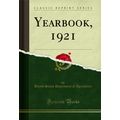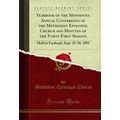Cambridge - Hall & Law Library, Fitzwilliam College - postcard c.1980s
- Condition : Used
- Dispatch : 2 Days
- Brand : None
- ID# : 128784754
- Quantity : 1 item
- Views : 439
- Location : United Kingdom

- Seller : justthebook (+1703)
- Barcode : None
- Start : Sat 07 Jun 2014 23:26:29 (BST)
- Close : Run Until Sold
- Remain : Run Until Sold
More Listings from This Seller view all
Seller's Description
- Postcard
- Picture / Image: The Hall and the Law Library - Fitzwilliam College, Cambridge
- Publisher: Fitzwilliam College / printed by Just Postcards
- Postally used: no - written but not posted
- Stamp: n/a
- Postmark(s): n/a
- Sent to: n/a
- Notes / condition:
Please ask if you need any other information and I will do the best I can to answer.
Image may be low res for illustrative purposes - if you need a higher definition image then please contact me and I may be able to send one. No cards have been trimmed (unless stated).
------------------------------------------------
Postage & Packing:
Postage and packing charge should be showing for your location (contact if not sure).
No additional charges for more than one postcard. You can buy as many postcards from me as you like and you will just pay the fee above once. Please wait for combined invoice. (If buying postcards with other things such as books, please contact or wait for invoice before paying).
Payment Methods:
UK - PayPal, Cheque (from UK bank) or postal order
Outside UK: PayPal ONLY (unless otherwise stated) please. NO non-UK currency checks or money orders (sorry).
NOTE: All postcards are sent in brand new stiffened envelopes which I have bought for the task. These are specially made to protect postcards and you may be able to re-use them. In addition there are other costs to sending so the above charge is not just for the stamp!
I will give a full refund if you are not fully satisfied with the postcard.
----------------------------------------------
Text from the free encyclopedia WIKIPEDIA may appear below to give a little background information (internal links may not work) :
*************
Fitzwilliam College is one of the constituent colleges of the University of Cambridge, England.
The college traces its origins back to 1869 and the foundation of the Non-Collegiate Students Board, a venture intended to offer students from less financially privileged backgrounds a chance to study at the university.
The institution was originally based at Fitzwilliam Hall (later renamed Fitzwilliam House), opposite the Fitzwilliam Museum in central Cambridge. Having moved to its present site in the north of the city, Fitzwilliam attained collegiate status in 1966. Female undergraduates were first admitted in 1978.
Fitzwilliam is home to around 450 undergraduates, 300 graduate students and 90 fellows.[1]
The college is sometimes known to its members and others at Cambridge University as ""Fitz"".
In 1869, Cambridge University altered its statutes to allow men who were not members of a college to become members of the University under the supervision of a censor, whose office was in Trumpington Street, opposite the Fitzwilliam Museum. This provided students who could not afford to belong to a college with a base from which to study at the University, allowing them to be admitted to degrees, sit examinations and compete for scholarships.[2] The name ""Fitzwilliam"" was chosen by the students at a meeting of the Non-Collegiate Amalgamation Club in the Spring of 1887 and, as a result, the University decreed that the house in Trumpington Street could be known as Fitzwilliam Hall. This became the headquarters of the Non-Collegiate Students Board and provided student facilities and limited accommodation. It was renamed Fitzwilliam House in 1922.
Due to its emphasis on academic ability rather than wealth, Fitzwilliam quickly attracted a strong academic contingent that included future Nobel Prize winners, Heads of State and important judicial figures. It developed a tradition in Medicine and established a reputation as one of the most internationally diverse institutions within the University.[3]
In the second half of the 20th century, the availability of grants made Cambridge more accessible and the need for a non-collegiate body of undergraduates began to decline. The suggestion that Fitzwilliam close prompted an outcry from former students and it was therefore decided that it should aim for collegiate status. Funds were accumulated and a new site was acquired at Castle Hill, about one mile north of the city centre. The first new buildings were opened in 1963.
In 1966, Fitzwilliam House was granted a royal charter by the Queen-in-Council and became Fitzwilliam College.[2]
Since Fitzwilliam began operating at its current site in the north-west of Cambridge, it has grown steadily and developed into one of the larger, more cosmopolitan colleges within the University. Built around a regency manor house, the college has increased by one or two buildings each decade and now consists of five courts in large, rectangular gardens, enclosed by the outer-walls of various dormitories.[4] In contrast to most of the University, and indeed the regency estate at the college's centre, the majority of the buildings are of modern design.[5]
The first two courts and the central building (comprising, among other things, the old library, the dining hall, the junior common room and the bar) were designed by Sir Denys Lasdun and were completed in 1963. The intention was for these buildings to constitute the back of the college and, as funding became available, the college grew to the south, with New Court (1985), the Chapel (1991) and Wilson Court (1994). Finally, the plan was completed when Gatehouse Court (2003) became the college's new front. In the following year, the college completed the new Auditorium building, and in doing so became home to some of the best performance facilities in the University.[6]
In 2007 the college built a new boathouse, in 2009 the Library and IT Centre was added and, in 2010, the college acquired the buildings and grounds that formerly belonged to the Cambridge Lodge Hotel with the intention of renovating them for the use of graduate students.
Fitzwilliam has, over the years, also become known for its beautiful gardens, which largely predate the college.[7] In 2008, an archaeological dig found that the earliest clear evidence of settlement in Cambridge is the remains of a 3,500-year-old farmstead discovered on the College site.[8]
Fitzwilliam is one of only five Cambridge colleges to have won University Challenge. It did so in 1973 with a team that consisted of Philip Bassett (Botany), David Curry (Material Sciences), David Wurtzel (Law) and Michael Halls (English).[9] The same team featured in the 2002 Reunited Series and won its only game.[10]
The main grounds of the College are located off Storey's Way, towards the north-west of Cambridge. The college is sometimes identified as one of the Hill Colleges, together with Churchill College, St Edmund's College, Girton College and Murray Edwards College. These colleges are all among the most recently established and tend to share certain architectural features.
Fitzwilliam consists of a variety of modern buildings, built in the grounds of a regency estate.
The college's centrepiece is the Grove, a Grade II regency manor house. This was designed by the architect William Custance and constructed in 1813. Custance was also the house's first resident and his initials, along with the date '1814', can be found on a rainwater hopper at the side of the house.[11]
Another slightly smaller building known as Grove Lodge was also designed by Custance and is now part of Murray Edwards College.[12] For some time, both properties were owned by the Darwin family and The Grove served as Emma Darwin's primary residence between 1883 and 1896, following the death of her husband Charles. During this time, she had the interior lined with original William Morris wallpaper[13] and two of her sons had smaller houses built in the grounds. Although both have since been demolished, the house built by Horace Darwin, which was known as The Orchard, was donated to Murray Edwards College in 1962 and the site now serves as its primary campus.[14] In 1988, The Grove became part of Fitzwilliam and today it is home to the Senior Tutor's office and various multi-purpose rooms, as well as the Middle and Senior Common Rooms.[11]
The Hall Building is a large complex towards the back of the college. It was built between 1960 and 1963 and was designed by Sir Denys Lasdun,[14] who won Royal Gold Medal in 1977 and is most well known for having designed the National Theatre in London.[15] The building consists primarily of the college dining hall, but also houses the bar, kitchens, the junior common room, a couple of seminar rooms and a gymnasium. The dinner gong, just outside the dining hall, was originally the bell of HMS Ocean and was presented to Fitzwilliam House by Admiral of the Fleet Sir Caspar John in 1962.[16]
Like the Hall Building, Fellows' Court was part of the initial construction, designed by Sir Denys Lasdun and completed in 1963 at a cost of approximately £300,000.[17] It occupies an area in the far corner of the college and is enclosed by the Hall Building, the Law Library and two dormitories. It is generally reserved for fellows, and, as well as residence, housed the Fellows' Parlour.
Tree Court, the last component of the initial 1963 construction, is located at the north end of the college, opposite Fellows' Court. The court was initially the college's main entrance and, with a car park and a cycling bay just outside, it remains a back door to the college. Tree Court was Lasdun's first student accommodation; he would go on to design similar buildings at the University of East Anglia and Christ's College, Cambridge.[18] Although the court opens out onto the college gardens, the wall opposite the Hall Building was recently lengthened with the addition of the college's new Library and IT Centre. Today, Tree Court provides residence for the majority of first year students.
In the mid-eighties, the college expanded to the south with the construction of New Court, a three-walled residential compound, designed by MacCormac Jamieson Prichard. Students and fellows contributed to the design with such ideas as intersecting staircases and elongated windows.[19] The building won 1989 David Urwin Award for Best New Building.[20]
In 2004, the court gained its fourth wall with the completion of the college's new auditorium.
In 1991, a college chapel was appended to the north wing of New Court. The building, which was also designed by MacCormac Jamieson Prichard, faces directly towards the Grove and is of the International style. It is designed to resemble the hull of a ship, hinting at the religious themes of journey and protection.[20] The building is home to a fine two-manual organ designed by Peter Collins, a Bechstein grand piano and a Goble harpsichord.[21] The addition won the 1992 Civic Trust Award,[22] the 1993 Carpenters' Award[23] and the 1993 David Urwin Award for Best New Building.[20] The firm later used a similar design for the Ruskin Library at the University of Lancaster.
The fourth court was added to the south of the college, next to the boundary with Murray Edwards, in 1994. It was designed by van Heyningen and Haward Architects and includes 48 acoustically independent student bedrooms, three seminar rooms, a large common room with a bar and the Gordon Cameron Lecture Theatre, which is also used as the college cinema.[24] It won the 1996 RIBA Award.[25]
The completion of Gatehouse Court in 2003 saw the realisation of Sir Denys Lasdun's original vision. The design, courtesy of Allies & Morrison, reorientated the college by giving it a new entrance, complete with Porter's Lodge, administrative offices, meeting rooms, parking facilities, a large-scale engraving of the college crest and a flagpole. It also provided an extra 42 en suite bedrooms for student accommodation.[26] The college now faces south and opens onto Storey's Way, a smaller, primarily residential street branching off Madingley Road.
This development expanded the college's main site dramatically and the quality of the design was recognised with the award of the 2005 RIBA Award[25] and the 2005 BDA Award for Building of the Year.[27]
Perhaps the most impressive addition to the college site came with the completion of the Auditorium building in 2004. Having overseen the construction of Gatehouse Court, Allies & Morrison were employed to design the college's new performance facilities. Built using a similar brick to that used for the Grove almost 200 years earlier, the building is largely below ground-level, resulting in a direct view of the surrounding landscape for audience members towards the back of the gallery.[28] It won the 2005 Concrete Society Award and the 2005 BDA Award for Best Public Building.[27]
Located near the front of the college, the building faces New Court and backs onto the college gardens. Consisting of a large central performance area, three smaller practice rooms and an entrance hall, the auditorium is the official home of the Fitzwilliam Quartet.[29]
The main hall, which has been praised for its acoustics, houses a Steinway grand piano and the practice rooms, including instruments such as a tympani, a full-size drum kit, amplifiers and a Bösendorfer piano.[21] Although used primarily for music, the building has also hosted drama performances and important lectures.
In recent years, guests have included the American politician Jesse Jackson, former poet laureate Sir Andrew Motion, and the former head of MI6 Sir Richard Dearlove, who visited the college as part of the Arrol Adam Lecture Series in 2008.[25]
A new library and IT centre was completed in 2009. As of January 2010, its book collection contains around 60,000 volumes[30] and increases by about 1,000 volumes each year.[31] At a cost of £5 m, the building was designed by Edward Cullinan, who had worked with Lasdun on the original college plan, and who was undertaking his first major project after receiving the Royal Gold Medal in 2008.[32] It was built as an extension to the uncompleted east wing of Tree Court and was designed to allow maximum luminosity and energy efficiency.
The building, opened in April 2010 by the Duke of Edinburgh, is also fitted with extensive computing facilities and includes separate underground computer rooms for undergraduates and postgraduates. In 2011, alumnus Ken Olisa donated £1.4m to the development of the Library and IT Centre.[33] In recognition of this contribution, the building was officially named The Olisa Library. Unlike most college libraries, it is open 24 hours a day and 7 days a week.
type=printed
city/ region=cambridge
period=post-war (1945-present)
postage condition=unposted
number of items=single
size=continental/ modern (150x100 mm)
Listing Information
| Listing Type | Gallery Listing |
| Listing ID# | 128784754 |
| Start Time | Sat 07 Jun 2014 23:26:29 (BST) |
| Close Time | Run Until Sold |
| Starting Bid | Fixed Price (no bidding) |
| Item Condition | Used |
| Bids | 0 |
| Views | 439 |
| Dispatch Time | 2 Days |
| Quantity | 1 |
| Location | United Kingdom |
| Auto Extend | No |



 for 1 item(s)
for 1 item(s)

















